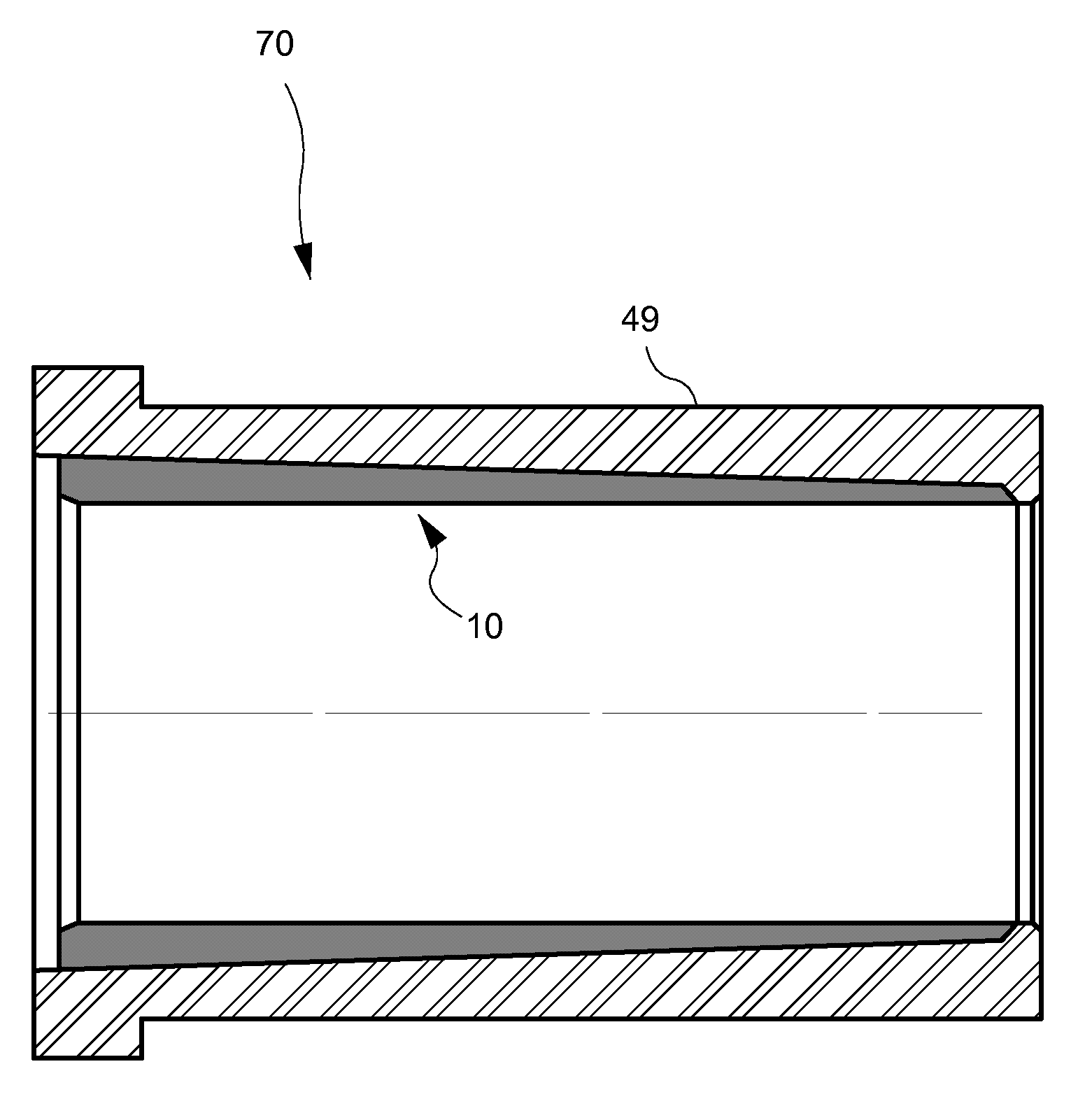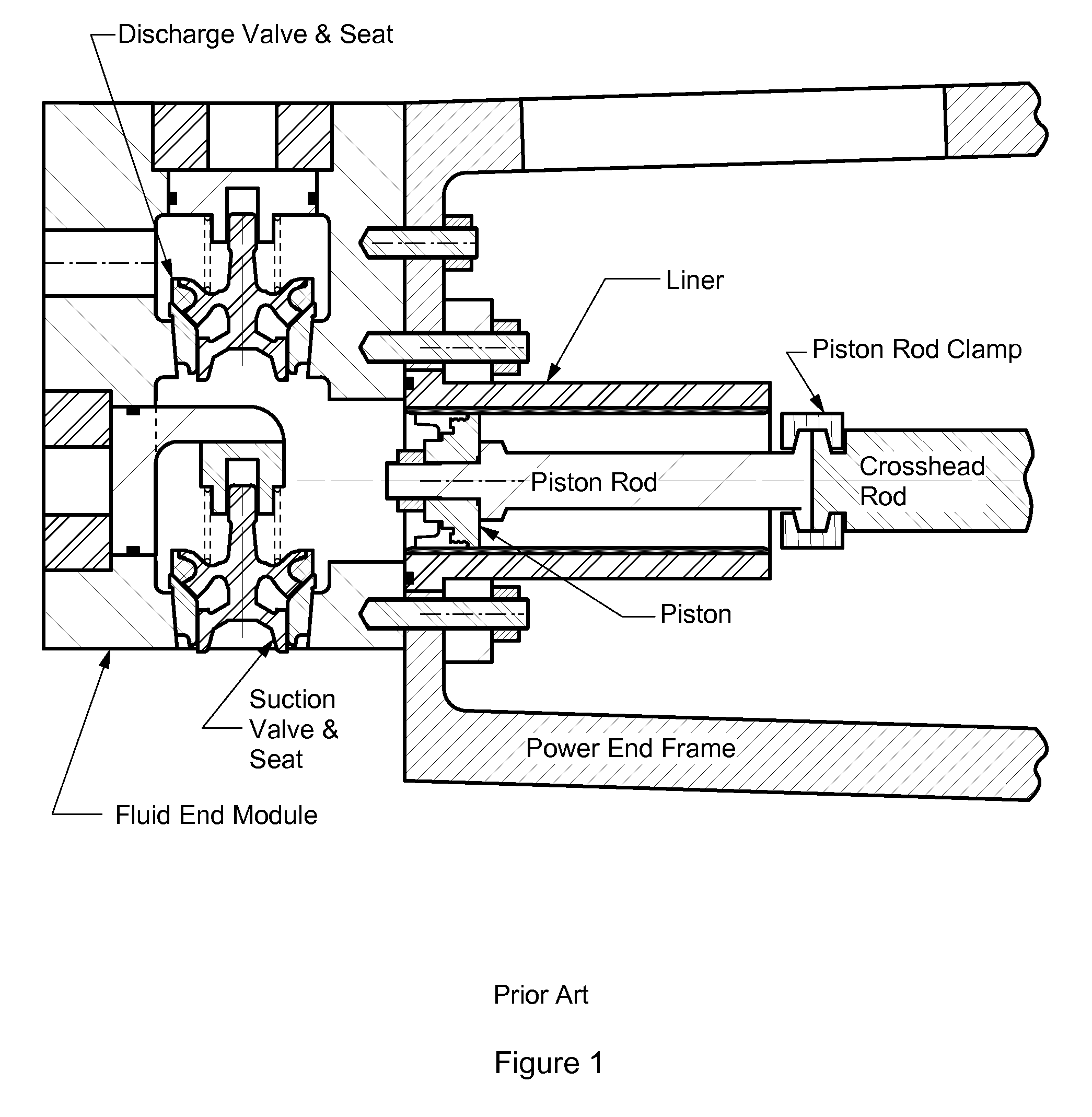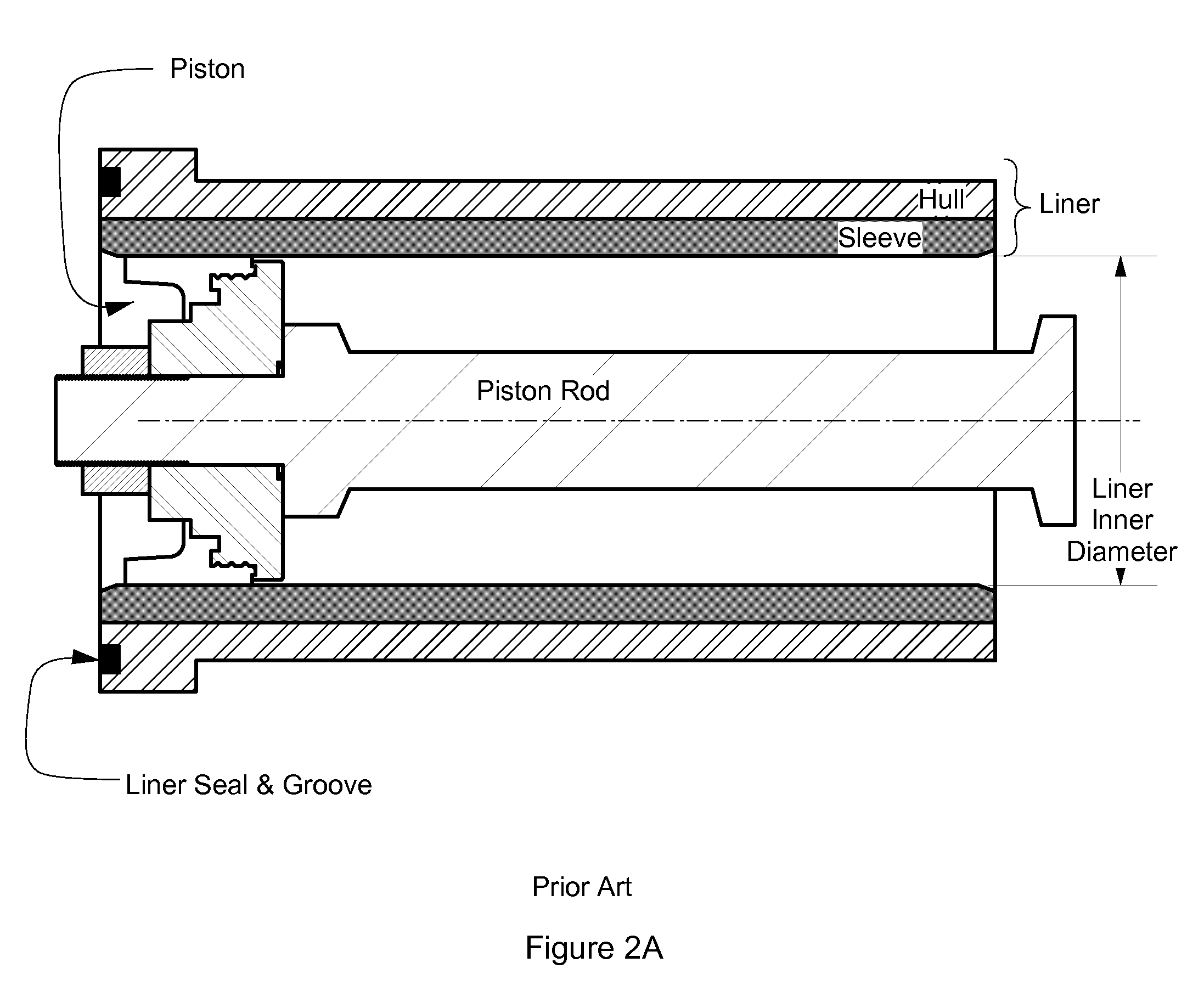Powdered metal inlay
a technology of powdered metal and inlay, which is applied in the direction of liquid fuel engines, machines/engines, operating means/release devices of valves, etc., can solve the problems of limited longitudinal movement of tubular inlay preform within the tubular hull, and achieves high repeatability, reduce stress on the brazed bond, and preserve the hardness and wear resistance
- Summary
- Abstract
- Description
- Claims
- Application Information
AI Technical Summary
Benefits of technology
Problems solved by technology
Method used
Image
Examples
Embodiment Construction
[0031]The very high modulus of elasticity of cemented carbide as described herein imparts substantial strength to certain layered bimetallic structures (e.g., mud pump liners). If a cemented carbide lining or preform sleeve is fused to the inner surface of a tubular hull, as by hot isostatic pressure (HIP) or centrifugal casting, the cemented carbide is held in compression by hull hoop stress resulting from the relatively greater radial shrinkage of the hull as it cools around the cemented carbide. The high modulus of elasticity of the cemented carbide then reduces the stress on the liner hull by as much as 50% when the liner is under pressure in service.
[0032]To ensure that the desired hull stress reduction is achieved, the carbide and the hull must be fused or welded together. A bond that is less strong, such as the shrink fit of a carbide sleeve in a hull (analogous to the shrink fit of a conventional chrome-iron sleeve within a hull), will not achieve the desired hull stress red...
PUM
| Property | Measurement | Unit |
|---|---|---|
| pressures | aaaaa | aaaaa |
| pressure | aaaaa | aaaaa |
| radial distance | aaaaa | aaaaa |
Abstract
Description
Claims
Application Information
 Login to View More
Login to View More - R&D
- Intellectual Property
- Life Sciences
- Materials
- Tech Scout
- Unparalleled Data Quality
- Higher Quality Content
- 60% Fewer Hallucinations
Browse by: Latest US Patents, China's latest patents, Technical Efficacy Thesaurus, Application Domain, Technology Topic, Popular Technical Reports.
© 2025 PatSnap. All rights reserved.Legal|Privacy policy|Modern Slavery Act Transparency Statement|Sitemap|About US| Contact US: help@patsnap.com



